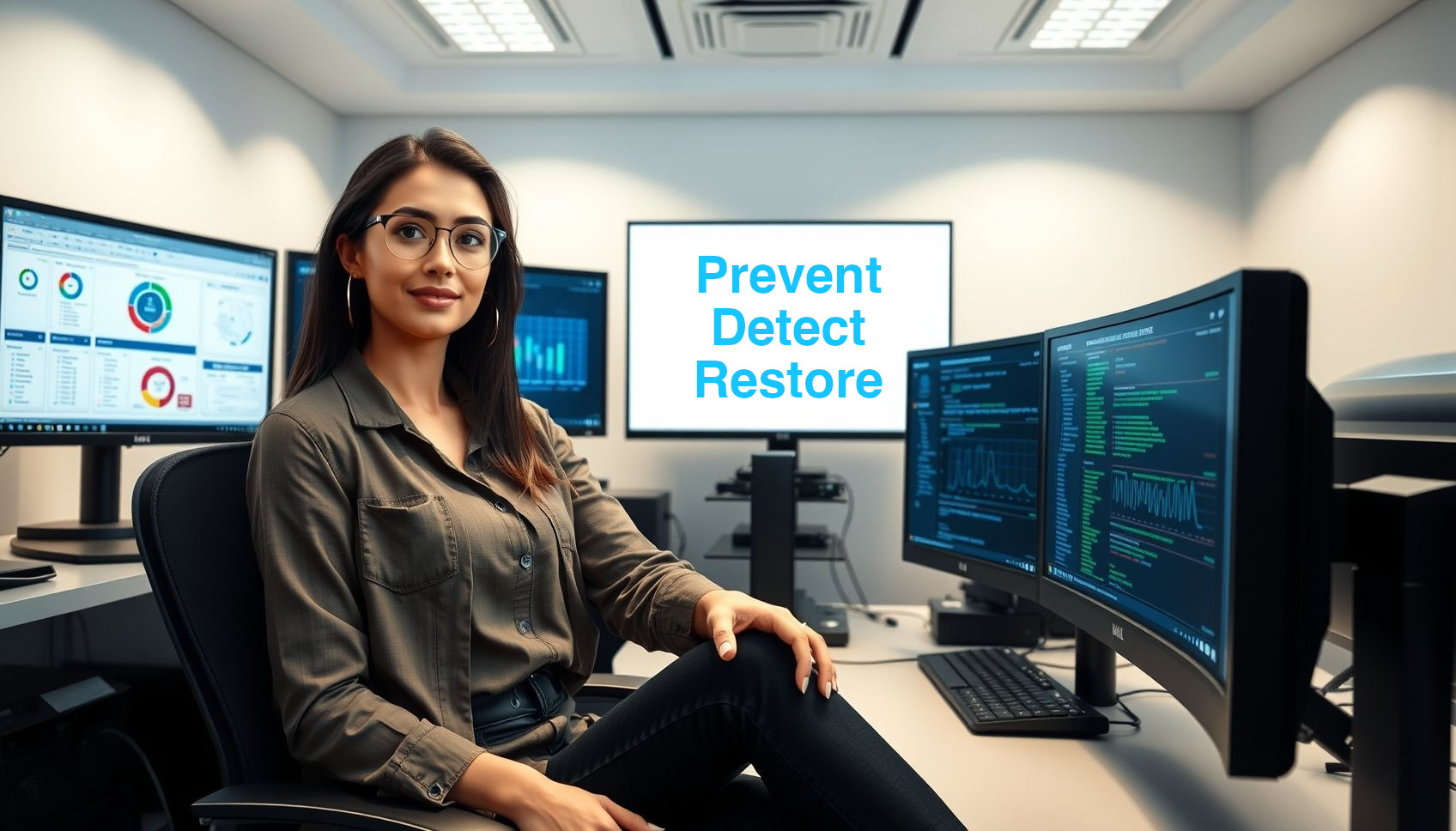The Pillars of Modern Cybersecurity
At GuardianHubX, our security strategy is based on three fundamental pillars to offer comprehensive protection. We implement advanced solutions to protect our clients' data and systems against any cyber threat.

At GuardianHubX, our security strategy is based on three fundamental pillars to offer comprehensive protection. We implement advanced solutions to protect our clients' data and systems against any cyber threat.

This is the first line of defense. The goal is to prevent intruders from gaining access through access control, device protection, and user training.
Detection acts as an alarm system. It allows us to identify suspicious activities in real-time to react immediately before an attacker can cause damage.
This pillar is our emergency plan. It ensures that we can quickly restore systems and data to minimize impact and guarantee business continuity.
Find out the real state of your security in less than 2 minutes.
Take our Free Cybersecurity Test